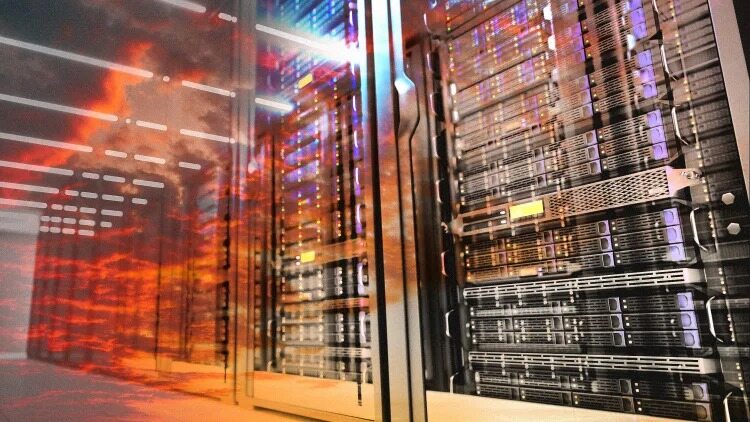- | 8:00 am
AI is making it difficult for IT to reduce carbon impact
It is critical for IT leaders to consider the whole picture for sustainability.

Many IT organizations have increased initiatives to promote corporate sustainability, but still struggle to overcome internal barriers to reach carbon reduction goals. Increasingly, IT leaders are being held accountable to promote sustainability. In fact, Gartner predicts 50% of CIOs will have performance metrics tied to the IT organization’ sustainability by 2025.
Initial sustainability efforts in IT typically focus on the energy consumption of existing on-premise data center storage. However, moving data to the cloud doesn’t solve anything. While many cloud providers are working to use renewable energy sources, the cloud still has many problems with inefficient hard drive and resource usage.
The need to think differently
According to IBM research, server utilization in data centers is only 12-18% of capacity. Furthermore, data center hardware needs to be replaced before the end of its life to avoid data loss. Meanwhile, data is frequently copied and stored in multiple locations for cyber-resilience.
Additionally, while the GenAI boom heralds great promises, it’s another major challenge in reducing carbon impact. Any carbon reduction made by IT is balanced by increased GPU needs in handling AI model learning and inference. Google recently ended its carbon-neutral promise and pushed out its goal to 2030 because of their GPU additions for developing Gemini AI.
We need to think differently about technology usage. The old maxim of reduce, reuse, and recycle remains relevant today and can be applied to IT operations. Organizations must question how efficiently they use technology. To truly reduce carbon impact, IT organizations need to tap into more efficient and sustainable ways to source the technology needed to run the business.
What IT leaders can do to reduce, reuse, and recycle
- Reduce: Optimize the use of storage capacity.
To reduce carbon footprints, organizations should focus on cloud vendors that maximize the potential of their existing storage resources. Distributed cloud services can bring hard drive utilization up to full capacity without risking data loss or holding unused capacity. This approach not only lowers cloud costs, but also contributes to sustainable practices by minimizing waste.
- Reduce: Eliminate duplicates and regional replication for durability.
Another effective strategy for minimizing data storage is assessing the necessity of multiple copies of data for durability purposes. Storing less data is a simple way to reduce carbon emissions. By implementing data deduplication techniques and smarter replication policies, organizations can maintain the required levels of data security and redundancy while storing fewer copies. Distributed cloud storage also minimizes the need for regional replication, which saves money and reduces the carbon impact of your data.
- Reduce and reuse: Scale AI needs by renting versus owning on-demand GPUs.
On-demand GPUs allow users to access powerful computing when needed, without buying expensive hardware. This saves money and allows for easy scaling up and down. Users can tap into the latest GPU technology without constant upgrades. Renting GPUs when and where you need them—instead of waiting for a month on an order—enables you to get same day access. This promotes not only sustainability, but also agility and innovation, so you can quickly start running analyses and testing models wherever your data is located.
- Reduce, reuse and recycle: Extend the life of already manufactured drives.
Extending the lifespan of existing drives is crucial for reducing environmental impact as the mining, transporting, and manufacturing processes are high carbon contributors. Traditional data centers need to retire their servers well before they stop working to ensure no data loss. Distributed cloud services use new technology that automatically repairs files and has built-in replication to ensure no data loss. This means that hard drives can be used until they fail. This significantly reduces the cost of storage and the carbon emissions from hardware waste. And if a company does need to replace hardware early, IT should look into recycling programs or repurposing that equipment to be a part of the distributed cloud.
Distributed cloud services reduce carbon emissions
The new architecture of the distributed cloud makes it easy to reduce the carbon emissions from compute and storage. Distributed cloud compute and storage transforms spare capacity into a massive global network, more efficiently utilizing existing resources while providing enterprise-level durability and high performance.
More efficient and intelligent use of technology is better for the planet, but also more efficient for your budget. Sustainability in tech—genuinely effective initiatives—will not be achieved overnight. However, with these strategies put into action, IT leaders can continue to support innovation while making significant reductions in carbon emissions.
Colby Winegar is chief revenue officer of Storj.






































